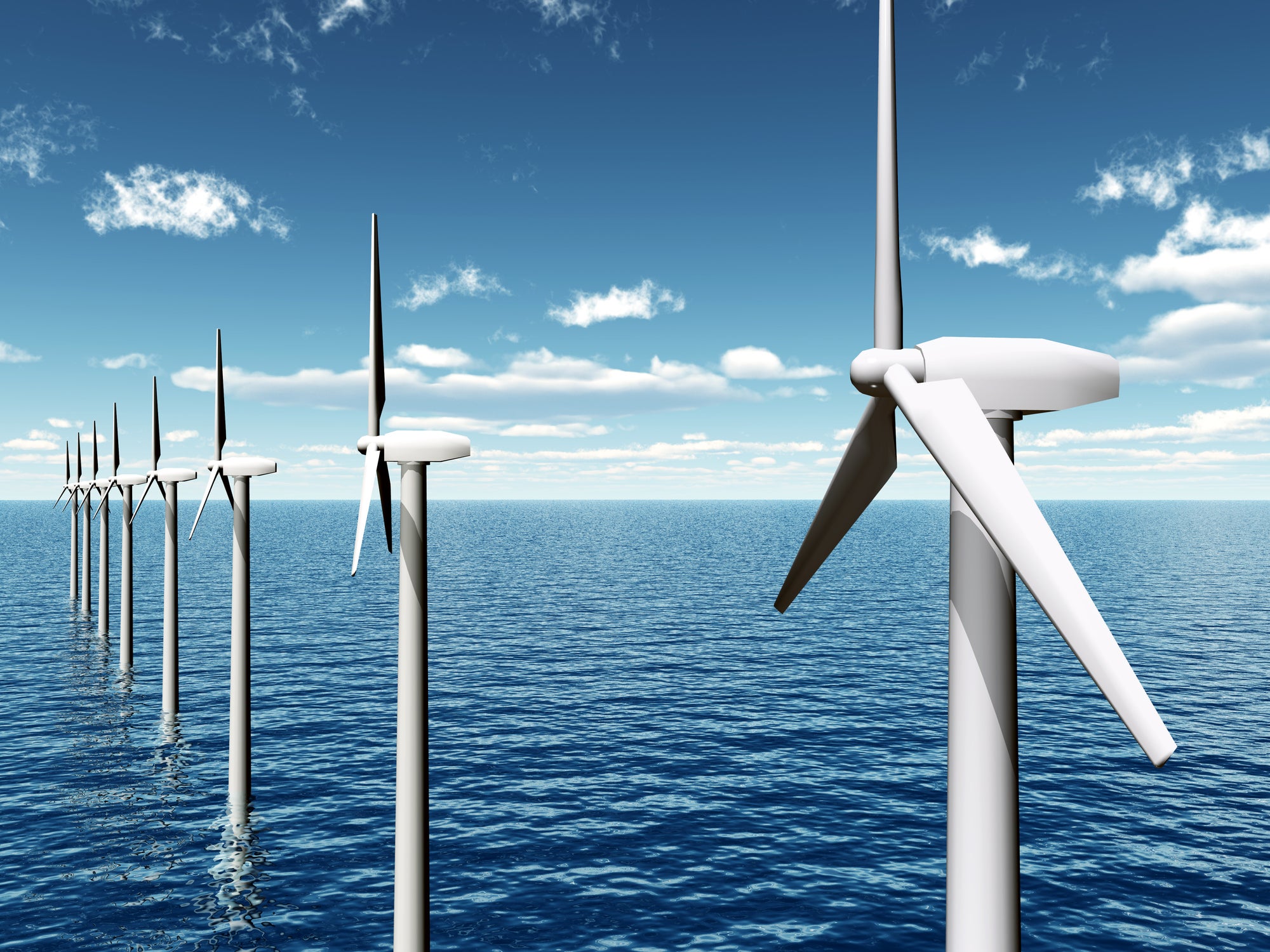Winds of change: Why we’re about to witness a renewable energy revolution
But if wind is the future, asks Harry Cockburn, why is it such a small fraction of the energy mix today?


Wind – you can’t see it, but that invisible blustery stuff is going to be powering us into the end of the 21st century and beyond. A landmark report by the International Energy Agency lays bare the extraordinary maturation of an industry which until recently was believed could only ever be a bit-player in the energy mix.
But an enormous fall in the price of constructing offshore wind farms, combined with improving technology and the germination of pockets of political will, means the planet is witnessing the tipping point at which the slide towards clean energy becomes an economic certainty.
Despite the UK being described as a “hostile environment” for renewables just last year, the IEA notes that even without strong government support, Britain is leading the charge towards offshore wind power generation – although that lead is set to be taken by China within six years.
Overall, the report notes that the global offshore wind market grew by nearly 30 per cent every year between 2010 and 2018, with 150 projects in active development around the world.
With stronger political will and use of shallow and windy stretches of coastline, offshore wind has the potential to generate more than 420,000 terrawatt hours per year worldwide – more than 18 times the global electricity demand today, the report’s authors say.
But if the news is so good, how come wind only makes up 0.3 per cent of the world’s energy mix right now?
The answer is money. Wind power is getting cheaper, and new expenses are cropping up with fossil fuel extraction – as investors increasingly divest from dirty power. Association with environmentally unfriendly practices is becoming more toxic in a global population increasingly concerned about climate change.
What’s more, the shift can provide considerable business opportunities for existing fossil fuel players. This means instead of competing with the renewables sector, oil and gas companies are in a position to deploy their offshore expertise.
According to the IEA, around 40 per cent of the lifetime costs of an offshore wind project, including construction and maintenance, “have significant synergies” with the offshore oil and gas sector. This part of the renewables sector is estimated to be worth more than $400bn (£310bn) in Europe and China over the next two decades.
This is just one way money is now inexorably moving into renewable energy generation.
Earlier this year, the IEA revealed global investment in coal had tumbled by 75 per cent in three years, and a year before, the organisation noted: “It appears that banks, insurance companies, hedge funds, utilities and other operators in advanced economies are exiting the coal business.”
Fracking, which has provided a massive amount of energy in the US, is hitting powerful opposition in the UK, and with government support for electric boilers and heat pumps in homes set to impact gas demands, it is increasingly looking like a doomed venture.
Solar power is also seeing a huge boom. In just five years, the world’s solar capacity is expected to grow by 600 gigawatts – almost double the total electricity capacity of Japan, according to the IEA.
In total, renewable energy capacity is forecast to grow by 1,200 gigawatts by 2024 – equivalent to the total electricity capacity of the US.
But the headway being made in renewable capacity can provide camouflage for environmentally unsound practices by major players in the energy sector. Investment in clean energy by fossil fuel firms and governments provides a unique opportunity to point to the good being done, and obscure the continuing damage being done to the planet.
Join our commenting forum
Join thought-provoking conversations, follow other Independent readers and see their replies
Comments